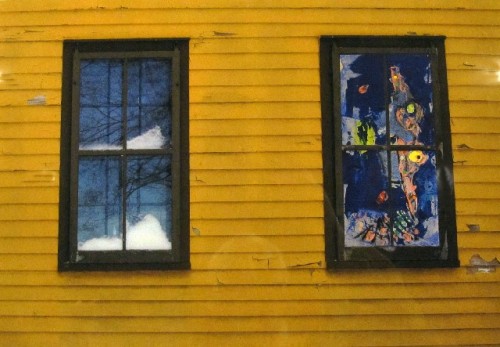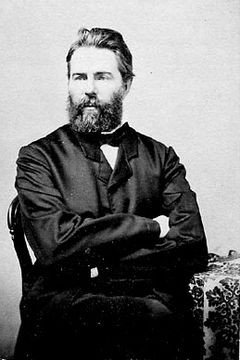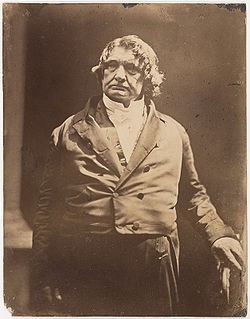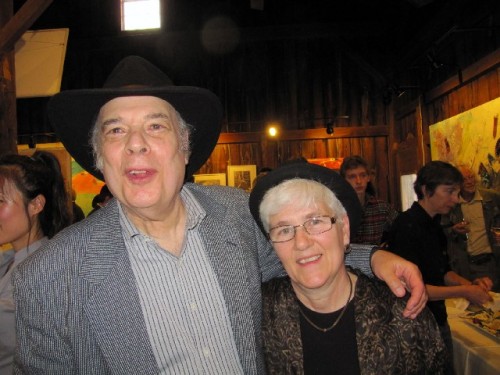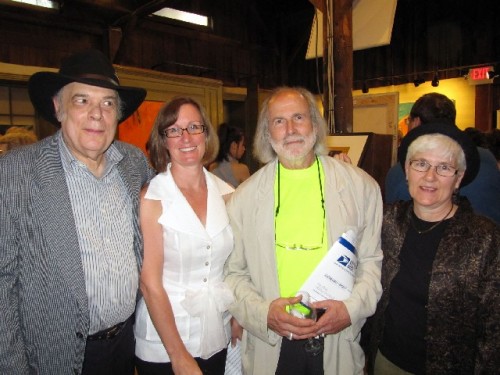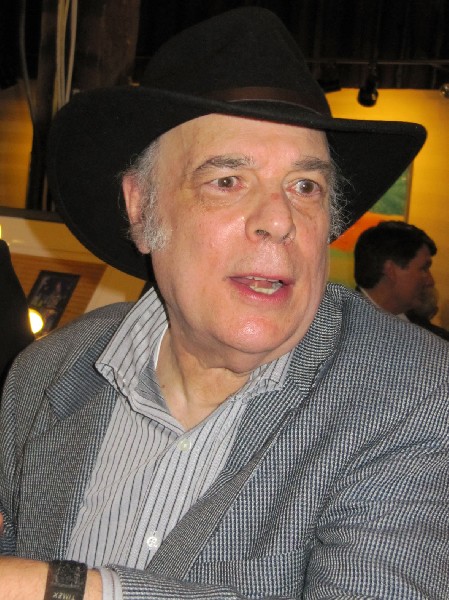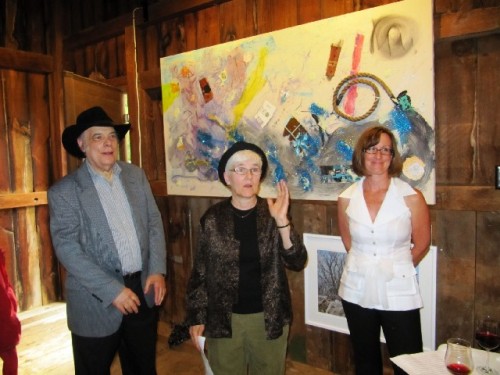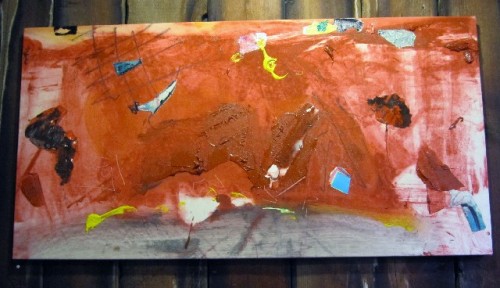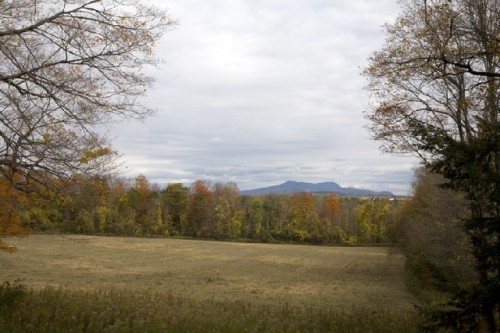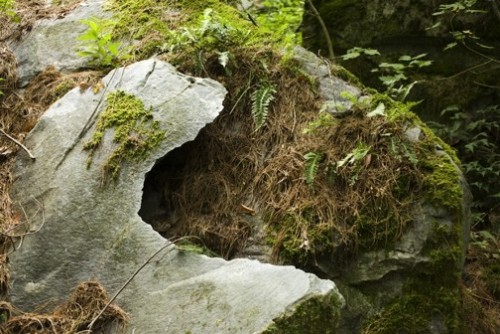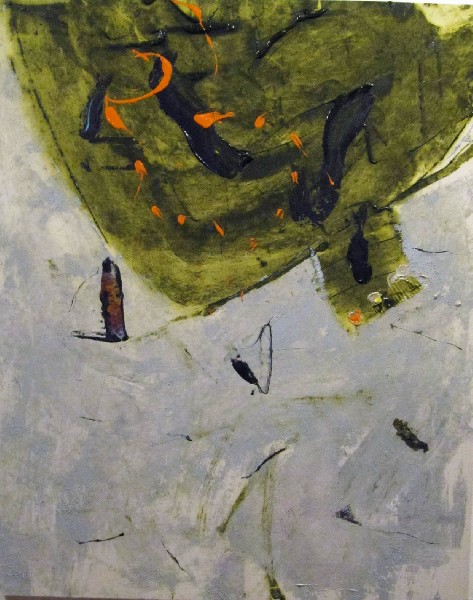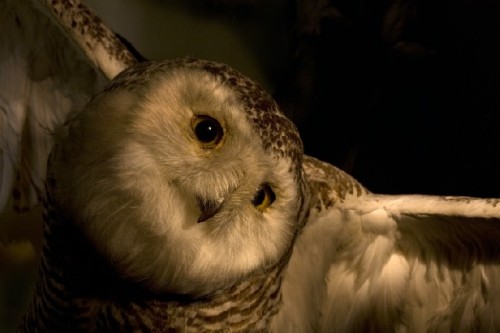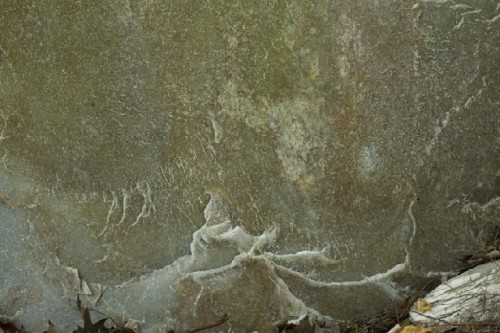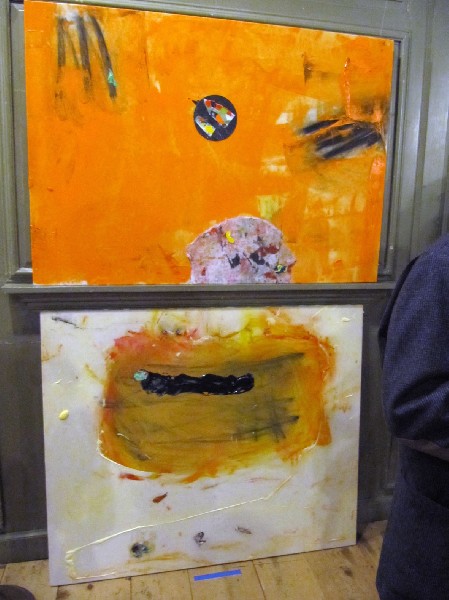Reflections on Melville: Arthur Yanoff and Kay Canavino
Arrowhead and the Eclipse Mill Gallery
By: Charles Giuliano - Jun 18, 2011
As Betsy Sherman, the director the historic site Arrowhead, took a group of twenty on a tour of the former home of author Herman Melville, she commented that this was the first time that there is an exhibition in the barn of work by contemporary artists.
Despite off putting rainy weather, last night, the barn was packed for the opening of “Reflections on Melville” a collaboration between the abstract painter, Arthur Yanoff, of Great Barrington, and the photographer, Kay Canavino from Adams.
When Yanoff discussed the idea of a Berkshire based project with gallerist, Ralph Brill, who operates a space in the Eclipse Mill in North Adams, he wanted to do something that was “not about tourism.”
“Marcia Stamell and I moved to the Berkshires in 1996,” Yanoff said. “We moved to Great Barrington around 1998. Marcia came up with the idea based on the hike to Monument Mountain by Melville and Hawthorne. She is a journalist with a very strong background and interest in American Literature. She has helped me come up with ideas for other projects that I have done. I got into Hawthorne's Ethan Brand, which is about the unpardonable sin. This carried over into Moby Dick, etc.”
Decades ago I knew Yanoff when he was hanging out at “Coffee Corner” near Symphony Hall in Boston. He was among a circle of hipsters who would meet over endless cups of java and bat around issues and ideas including Moby Dick and the writings of Melville.
During the intense and fascinating house tour Sherman spoke at length of the relationship and collaborations of Melville and the author Nathaniel Hawthorne who lived in Lenox. They met on Monument Mountain in Great Barrington. Visible in the distance from the window of the second floor parlor is Mount Greylock. Its snow covered, humped shape, nestled in smaller undulating crests, made Melville think of the great leviathan who inspired what is now considered to be among America’s greatest literary masterpieces.
Even living in the land locked Berkshires, Melville, a veteran sailor, according to Sherman, often used nautical terminologies and images in his daily speech. He saw himself as a farmer but this mostly meant feeding and grooming his horse. She said he was fascinated by the cow eating pumpkins.
Moby Dick failed to find an audience when it was published in 1851. There was a further setback when his father in law, the Chief Justice of Massachusetts, Lemuel Shaw, who had been subsidizing Melville’s extended family, which included his mother and four spinster sisters as well as his own four children, passed away in 1861.
Falling on hard times Melville swapped with a brother for a house in Lower Manhattan. He took a job as a custom’s clerk. In the exchange Melville’s brother more or less swindled them out of his wife’s inheritance. She later came into a smaller one from an uncle and they were able to live their last years with relative security. An obituary noted him as one who died but had long been presumed dead by his peers.
Off Melville’s study, the largest room in the house which he had all to himself, was a small bedroom. Sherman pointed to it as where Hawthorne slept during the only time he stayed over. More often Melville hitched up the buggy and drove over to Lenox to visit with Hawthorne.
When Yanoff narrowed down to doing something on Melville and Hawthorne it was Brill’s suggestion to collaborate with Canavino. They also invited the art historian Samantha Pinckney to act as curator, selecting the works and installing the Arrowhead exhibition as well as writing a critical essay. She read her remarks during the reception.
For Canavino it proved to be a challenging experience. “Especially last winter,” she commented with a knowing roll of her eyes. Previously she has always worked independently. But for his project she listened to Brill and Yanoff who required specific images. Like the inevitable views of Monument Mountain. Or shots of a rock formation called “Whale’s Jaw.”
Of course this also meant reading Moby Dick which she much enjoyed. “There is also a lot written about Melville and Moby Dick. Some was interesting and easy to read and some was not.” There are now some 400 Melville scholars. Canavino told me that she enjoys reading so she welcomed taking on that aspect of the collaboration.
In the studio Canavino’s photographs were the jumping off point for Yanoff. The paintings are inspired by Canavino’s images but without any literal attempts to copy. During the artists’ talk Brill intervened to point out specific examples.
We got a sense of the labor intensive pressures on Canavino. While Yanoff worked in the warmth and comfort of the studio, by contrast, Canavino was trekking through nature in the dead of a truly epic winter. Trudging on snow shoes she described climbing a steep hill with a heavy back pack. She slipped and landed on her back with a large lens lodged between her shoulder blades. Ouch.
If this was the first ever summer exhibition in the Arrowhead barn it’s a no brainer that there will be more. Given the media attention it is sure to bring more traffic to the historic site. It also proved to be a rustic but natural space for displaying the work.
The show was nicely installed with a real synergy between the photographs and the paintings which they inspired. The warmth and friendship they exuded was genuine.
Truth and accuracy is very important to Yanoff. Often during his presentation he assured us that this is the real thing and not any kind of trumped up fake. If the 19th century critic, John Ruskin uttered “Truth to nature” for Yanoff it may be “Truth to art.”
In an era when the art world is awash in hype and much of what glitters proves to be fool’s gold Yanoff is truly obsessed with the honesty of his work.
Asked about it we tried to pin it down. “Are you a formalist” I asked? “Were you a part of the New New Painting movement championed by former Museum of Fine Arts curator Kenworth Moffett?”
“Sure” he said. “Moffett showed my work at the MFA. You were there at the opening. Remember?”
Not really, I replied, as more and more of the past is an ever fading blur.
“It was a show of works on paper” Yanoff reminded me. “I had several pieces and they all sold.” No wonder he recalls Ken with such affection. Now it is up to Ralph.
Part two of the collaboration will be hung at the Eclipse Mill this week. Normally that would mean another opening this coming Friday. But it is Wilco weekend at Mass MoCA. So Brill is planning a reception with a date yet to be announced. Stay tuned.


